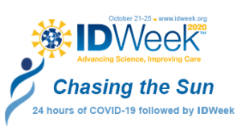Session : HIV in Special Populations
114 - HIV Prevalence and Associated Factors Among Persons Experiencing Homelessness (PEH) During a Multi-shelter Tuberculosis (TB) Outbreak in Atlanta, Georgia (2008 – 2018)
Oral Abstract
Location: On Demand
Background: Jointly and independently, HIV and homelessness are strong risk factors for acquiring tuberculosis (TB) in the United States (US). However, public health programs geared towards addressing TB among persons experiencing homelessness (PEH) are often not used as prime opportunities to also actively address HIV among PEH. Here, we describe the prevalence and risk factors associated with HIV among PEH who were screened during a city-wide TB screening program among PEH initiated in response to a multi-shelter TB outbreak in Atlanta, Georgia.
Methods: Retrospective analysis of data on 18,605 PEH screened for TB between 2008 and 2018 was done. HIV status was either self-reported (SR) or laboratory-confirmed (LC). Modified Poisson regression models with robust error variances were used to assess associations between socio-demographic characteristics and being HIV-positive.
Results: Of 18,605 PEH screened for TB, 9,308 (53%) had a known HIV status. Of these, 38% (n=3,559) received a HIV test while 62% (n=5,749) were only SR HIV status. The prevalence of HIV positivity among all PEH who SR a HIV status (n=7,404) was 4.0% (296/7404) while the prevalence of LC HIV infection was 3.6% (129/3559). Among PEH with LC HIV results, gender (male, transgender), year of screening (2008-2010, 2011-2013) and location of screening (onsite) were independently associated with higher HIV prevalence (p< 0.05). Adjusted analysis showed statistically significant interaction between gender and age [Adjusted prevalence ratio for men vs. women: young PEH (0-29 years) 8.47 (5.13, 14.00), p< 0.0001]. Year of screening and shelter of residence also remained significant in the adjusted model.
Conclusion: The prevalence of HIV among PEH in Atlanta is more than four times higher than the prevalence in the general Atlanta population (0.86%). In addition to essential TB control measures needed in congregate settings like homeless shelters, strong efforts to concurrently increase access to HIV prevention and care at homeless shelters may also help reduce both HIV transmission and TB acquisition in this at-risk population in the South and move the South closer to achieving the US End TB and Ending the HIV Epidemic goals.
- UO
Udodirim Onwubiko, MBBS, MPH
Epidemiologist
Fulton County Board of Health
Atlanta, GeorgiaDisclosure: I do not have any relevant financial / non-financial relationships with any proprietary interests.


